
L V
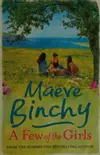
A series of stand alone stories that when reading, felt like a glimpse into people’s windows, or like overhearing strangers talking in a cafe. The stories are all vivid and believable. Some are happy, some are heart breaking. I think the reader will resonate with one, if not many of the situations posed in these stories. It’s comforting in that you will see yourself in them and feel seen.
A series of stand alone stories that when reading, felt like a glimpse into people’s windows, or like overhearing strangers talking in a cafe. The stories are all vivid and believable. Some are happy, some are heart breaking. I think the reader will resonate with one, if not many of the situations posed in these stories. It’s comforting in that you will see yourself in them and feel seen.
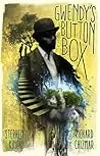
What a weight on Gwendy's shoulders. Throughout this read, I kept shifting from wanting that responsibility to never ever even imagining such a thing. At any rate, I’m convinced that Gwendy’s successor was a bit more careless, and I blame him for today’s political climate and a whole lot more. If the torch is ever passed on to me, rest assured that I’ll take care of him! This book also contained the short story, The Music Room. What the want and need for money does to people...
What a weight on Gwendy's shoulders. Throughout this read, I kept shifting from wanting that responsibility to never ever even imagining such a thing. At any rate, I’m convinced that Gwendy’s successor was a bit more careless, and I blame him for today’s political climate and a whole lot more. If the torch is ever passed on to me, rest assured that I’ll take care of him! This book also contained the short story, The Music Room. What the want and need for money does to people...
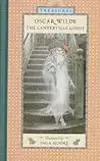
My first time reading this one. I always thought it was a long and morbid-like spooky tale. I was pleasantly surprised that it is a short, humorous read. It’s a family-friendly type of Halloween story. I enjoyed it, but if you’re looking for dark and scary, look elsewhere.
My first time reading this one. I always thought it was a long and morbid-like spooky tale. I was pleasantly surprised that it is a short, humorous read. It’s a family-friendly type of Halloween story. I enjoyed it, but if you’re looking for dark and scary, look elsewhere.

I just read The Life of Chuck by Stephen King, and this novella could seamlessly read as its Part II. A beautiful story about celebrating life and facing all that comes along with nearing the end. I was not prepared for the tears but should’ve prepared myself. I mean, this is a Backman afterall.
I just read The Life of Chuck by Stephen King, and this novella could seamlessly read as its Part II. A beautiful story about celebrating life and facing all that comes along with nearing the end. I was not prepared for the tears but should’ve prepared myself. I mean, this is a Backman afterall.

What a gem. So glad I came across its availability in Libby. My takeaway: you are not defined by just one thing - not your job, your losses, your successes. You are the sum of all of your experiences. We live through hard times; but better to live through them as there are always good times that await. Best to live life to its fullest. We are large. We contain multitudes.
What a gem. So glad I came across its availability in Libby. My takeaway: you are not defined by just one thing - not your job, your losses, your successes. You are the sum of all of your experiences. We live through hard times; but better to live through them as there are always good times that await. Best to live life to its fullest. We are large. We contain multitudes.

My not finishing the book has nothing to do with the writing style or anything like that; but with my reading slump and my impatience for the book to reveal its mystery. Once I am back in a binge-reading kind of mood, I will definitely revisit this one.
My not finishing the book has nothing to do with the writing style or anything like that; but with my reading slump and my impatience for the book to reveal its mystery. Once I am back in a binge-reading kind of mood, I will definitely revisit this one.

My not finishing the book has nothing to do with the writing style or anything like that; but with my reading slump and my impatience for the book to reveal its mystery. Once I am back in a binge-reading kind of mood, I will definitely revisit this one.
My not finishing the book has nothing to do with the writing style or anything like that; but with my reading slump and my impatience for the book to reveal its mystery. Once I am back in a binge-reading kind of mood, I will definitely revisit this one.
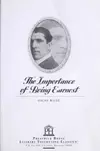
What a fun little farce. It reminded me of the works by PG Wodehouse, whom I adore. What made this read even more special to me is that, while I read, it dawned on me that a very old movie my mom and I would watch from time to time is an adaptation of this play. I’ll definitely be rereading this time and again to remember mom and to help get me out of those horrid little reading slumps that sneak up unexpectedly.
Although on the surface this might seem like a silly little play, there is so much social commentary on education, church, society and the law, if you read between the lines and remember the times in which he wrote this and what he was going through. And to be able to infuse humor? The more I think about it, the more my respect for the author grows.
What a fun little farce. It reminded me of the works by PG Wodehouse, whom I adore. What made this read even more special to me is that, while I read, it dawned on me that a very old movie my mom and I would watch from time to time is an adaptation of this play. I’ll definitely be rereading this time and again to remember mom and to help get me out of those horrid little reading slumps that sneak up unexpectedly.
Although on the surface this might seem like a silly little play, there is so much social commentary on education, church, society and the law, if you read between the lines and remember the times in which he wrote this and what he was going through. And to be able to infuse humor? The more I think about it, the more my respect for the author grows.
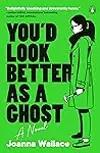
Warning: Elder abuse might take you aback. I was not expecting it and did not enjoy reading through those bits.
I’ve been reading some trippy books lately, add this one to the list. Claire is one petty and judgy killer. She’s kind of insane and relatable at the same time. Yikes. What does this say about me??
Warning: Elder abuse might take you aback. I was not expecting it and did not enjoy reading through those bits.
I’ve been reading some trippy books lately, add this one to the list. Claire is one petty and judgy killer. She’s kind of insane and relatable at the same time. Yikes. What does this say about me??

Warning: Elder abuse might take you aback. I was not expecting it and did not enjoy reading through those bits.
I’ve been reading some trippy books lately, add this one to the list. Claire is one petty and judgy killer. She’s kind of insane and relatable at the same time. Yikes. What does this say about me??
Warning: Elder abuse might take you aback. I was not expecting it and did not enjoy reading through those bits.
I’ve been reading some trippy books lately, add this one to the list. Claire is one petty and judgy killer. She’s kind of insane and relatable at the same time. Yikes. What does this say about me??
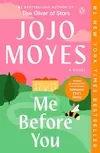
2025 Review:
When I first read this years ago, I found it to be uplifting and sad all at the same time, and though it still rings true, this time around it felt a lot more tense. I guess it’s because I’m older and can understand more deeply how each side feels about the matter at hand and how its outcome could affect them all for life. It’s not an easy situation to be in for anyone; and so unfair that it has to happen at all.
2014 Review:
It's been a long while since I've read the perfect blend of sad and uplifting. Me Before You delivers just that.
A once corporate hot shot who loved loads of physical activities, travel, and women becomes a quadriplegic due to freak accident in which a guy in a motorbike rams into him. Two years pass, and Will cannot live with the physical and emotional pain anymore. He contemplates making arrangements for assisted suicide. The story brings forth a most uncomfortable topic in a sensitive yet straightforward manner. Will, and those who care for him, all share their points of view on the subject. The author does a magnificent job of not sugar-coating or pointing the finger at any of the points of view depicted.
It's a shame that the title and cover have a “chick-lit” feel to it because I think a lot of men would enjoy this read as well. Though it is infused with some humor, I did not find it to be a romantic comedy. The publisher should really rethink the blurbs and cover for the next reprint. Give it a shot, fellas.
2025 Review:
When I first read this years ago, I found it to be uplifting and sad all at the same time, and though it still rings true, this time around it felt a lot more tense. I guess it’s because I’m older and can understand more deeply how each side feels about the matter at hand and how its outcome could affect them all for life. It’s not an easy situation to be in for anyone; and so unfair that it has to happen at all.
2014 Review:
It's been a long while since I've read the perfect blend of sad and uplifting. Me Before You delivers just that.
A once corporate hot shot who loved loads of physical activities, travel, and women becomes a quadriplegic due to freak accident in which a guy in a motorbike rams into him. Two years pass, and Will cannot live with the physical and emotional pain anymore. He contemplates making arrangements for assisted suicide. The story brings forth a most uncomfortable topic in a sensitive yet straightforward manner. Will, and those who care for him, all share their points of view on the subject. The author does a magnificent job of not sugar-coating or pointing the finger at any of the points of view depicted.
It's a shame that the title and cover have a “chick-lit” feel to it because I think a lot of men would enjoy this read as well. Though it is infused with some humor, I did not find it to be a romantic comedy. The publisher should really rethink the blurbs and cover for the next reprint. Give it a shot, fellas.
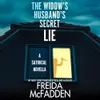
Hahaha! What did I just finish reading?? I feel like that one friend who talks too much and goes off on tangents took a hit of something and began riffing off this weird, trippy, silly-like fever dream of a tale.
The sarcasm (and over-use) used to unravel every trope known to man was an unexpected treat as was the use of the red herrings; so original and just genius. I’m glad Libby had this little gem as an offering and that I happened to stumble upon it.
Hahaha! What did I just finish reading?? I feel like that one friend who talks too much and goes off on tangents took a hit of something and began riffing off this weird, trippy, silly-like fever dream of a tale.
The sarcasm (and over-use) used to unravel every trope known to man was an unexpected treat as was the use of the red herrings; so original and just genius. I’m glad Libby had this little gem as an offering and that I happened to stumble upon it.
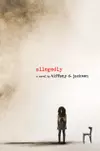
This was a page-turner of a book. It was twisty and kept me guessing all throughout. It loses steam at the very end though, but that’s okay. Even a roller coaster ride has to slow down and come to a stop at some point. And this read sure did feel like a rollercoaster ride. Read along to the audiobook. Pretty decent narrator.
This was a page-turner of a book. It was twisty and kept me guessing all throughout. It loses steam at the very end though, but that’s okay. Even a roller coaster ride has to slow down and come to a stop at some point. And this read sure did feel like a rollercoaster ride. Read along to the audiobook. Pretty decent narrator.

Hahaha! What did I just finish reading?? I feel like that one friend who talks too much and goes off on tangents took a hit of something and began riffing off this weird, trippy, silly-like fever dream of a tale.
The sarcasm (and over-use) used to unravel every trope known to man was an unexpected treat as was the use of the red herrings; so original and just genius. I’m glad Libby had this little gem as an offering and that I happened to stumble upon it.
Hahaha! What did I just finish reading?? I feel like that one friend who talks too much and goes off on tangents took a hit of something and began riffing off this weird, trippy, silly-like fever dream of a tale.
The sarcasm (and over-use) used to unravel every trope known to man was an unexpected treat as was the use of the red herrings; so original and just genius. I’m glad Libby had this little gem as an offering and that I happened to stumble upon it.

Voules? Who’s this Voules? This is the first story I read in which Jeeves doesn’t make an appearance to back up and be by old Reggie Pepper’s side. Instead, we get Voules, Reggie's disloyal and opportunistic valet . This is not a problem, though, as Reggie and company all come out of the jam unscathed.
Voules? Who’s this Voules? This is the first story I read in which Jeeves doesn’t make an appearance to back up and be by old Reggie Pepper’s side. Instead, we get Voules, Reggie's disloyal and opportunistic valet . This is not a problem, though, as Reggie and company all come out of the jam unscathed.

My not finishing the book has nothing to do with the writing style or anything like that; but with my reading slump and my impatience for the book to reveal its mystery. Once I am back in a binge-reading kind of mood, I will definitely revisit this one.
My not finishing the book has nothing to do with the writing style or anything like that; but with my reading slump and my impatience for the book to reveal its mystery. Once I am back in a binge-reading kind of mood, I will definitely revisit this one.
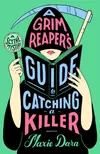
This was a nicely paced, cute little mystery. You’ll probably guess who the killer is pretty early on, but the down-to-earth characters and how their relationships develop, is worth the read.
This was a nicely paced, cute little mystery. You’ll probably guess who the killer is pretty early on, but the down-to-earth characters and how their relationships develop, is worth the read.
